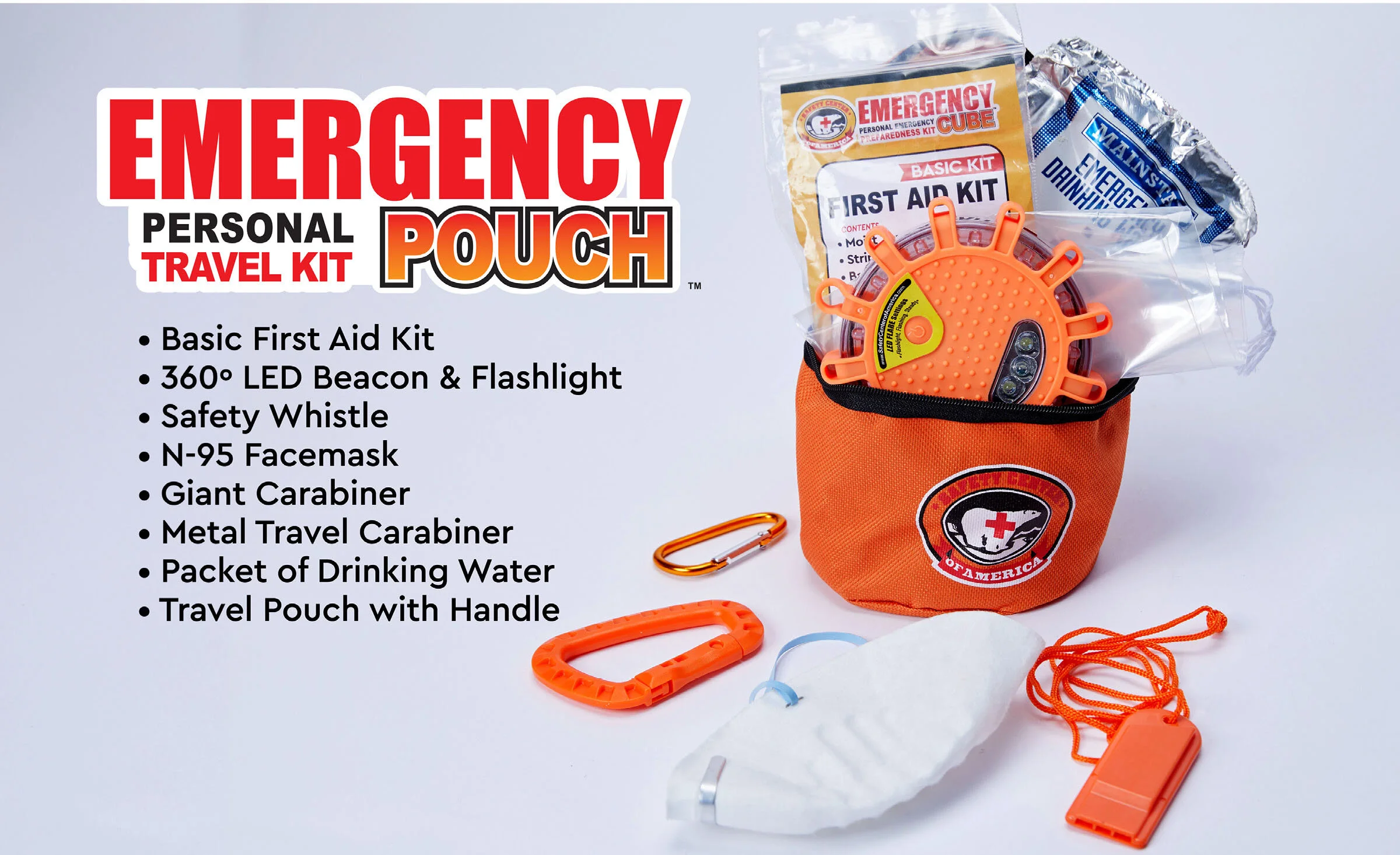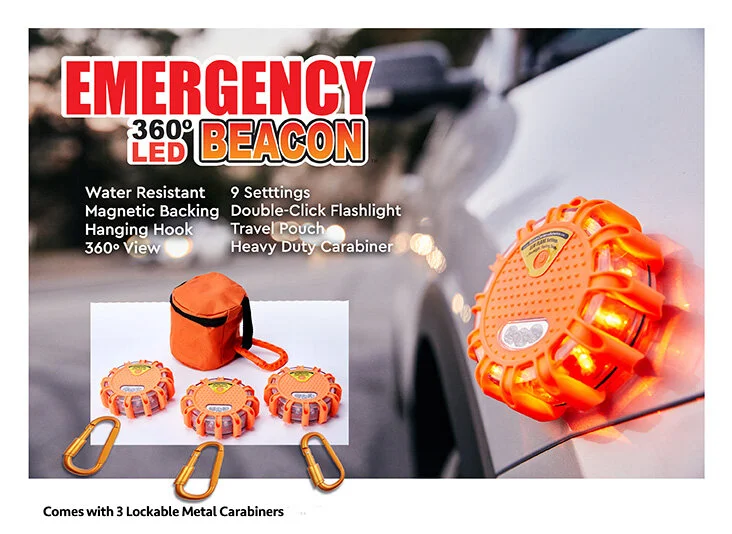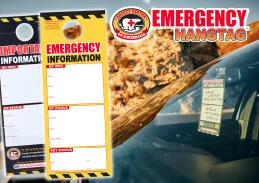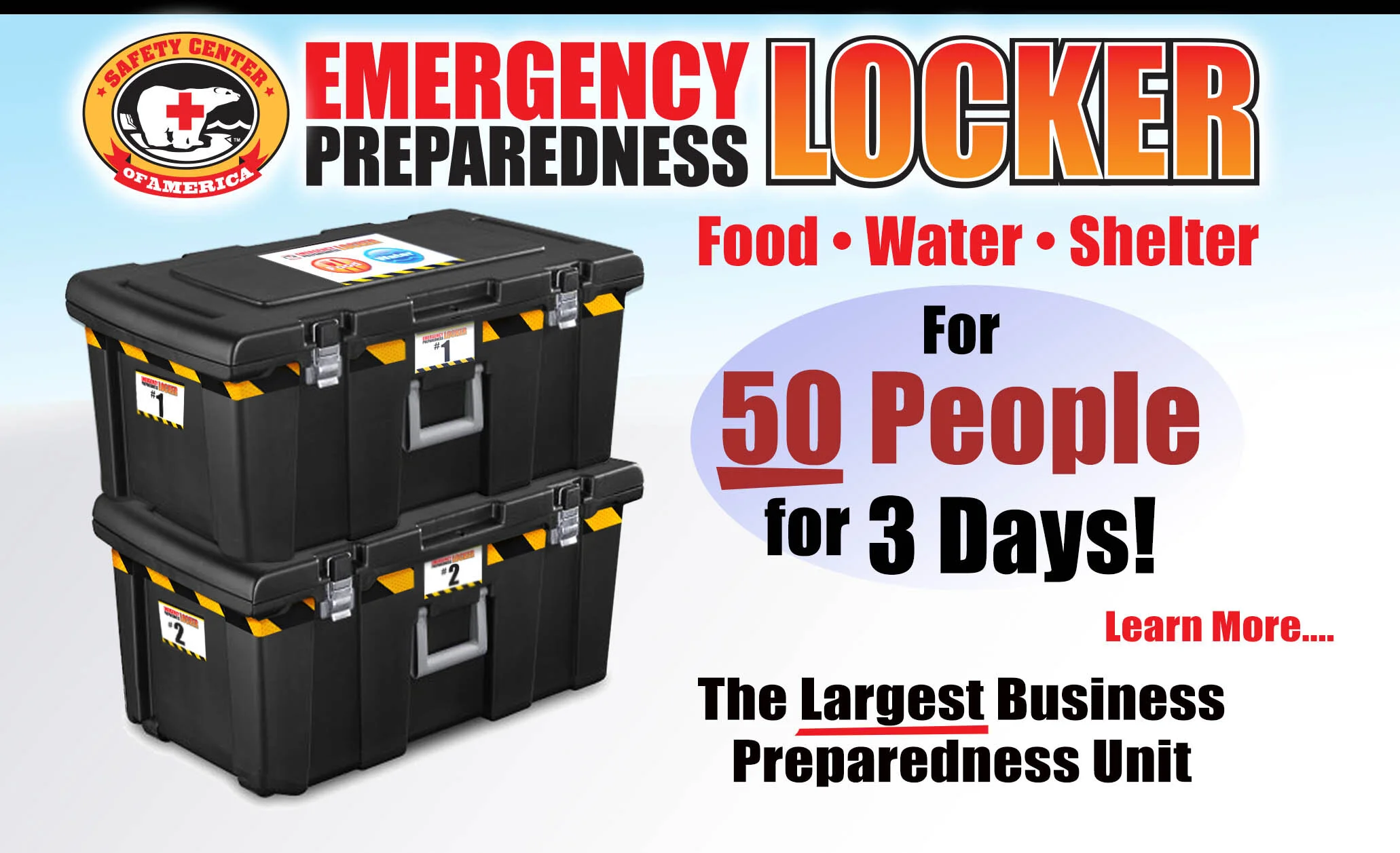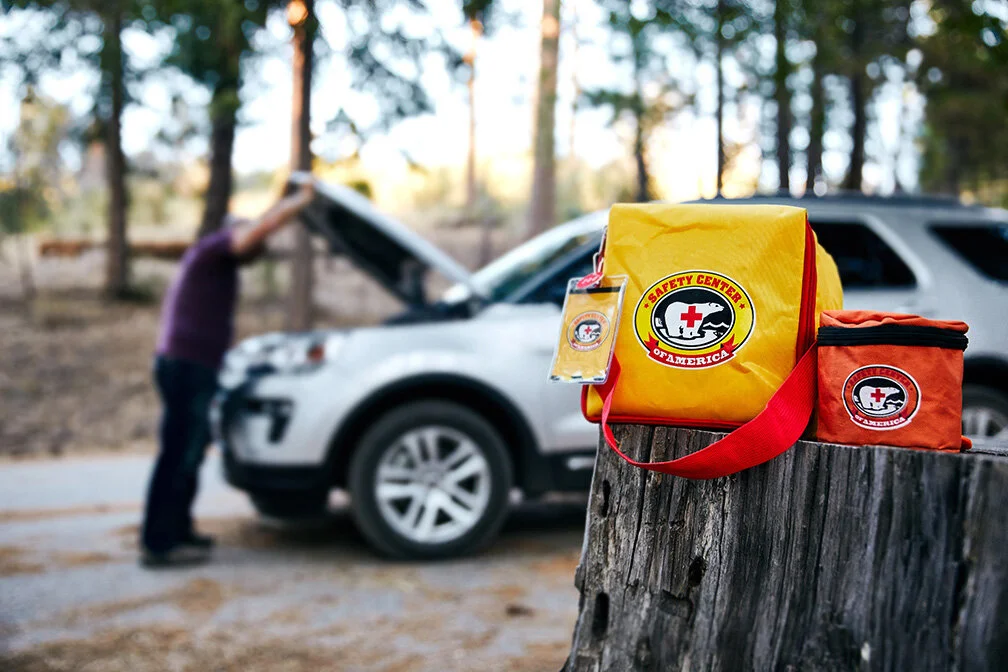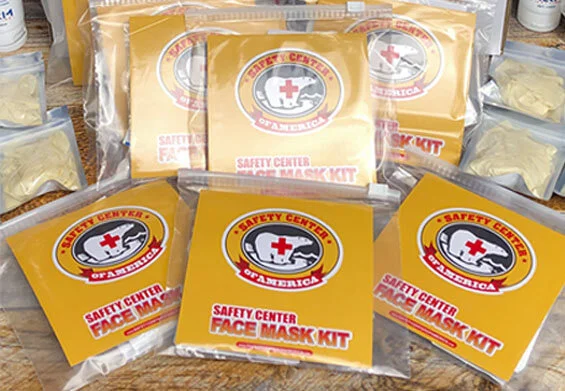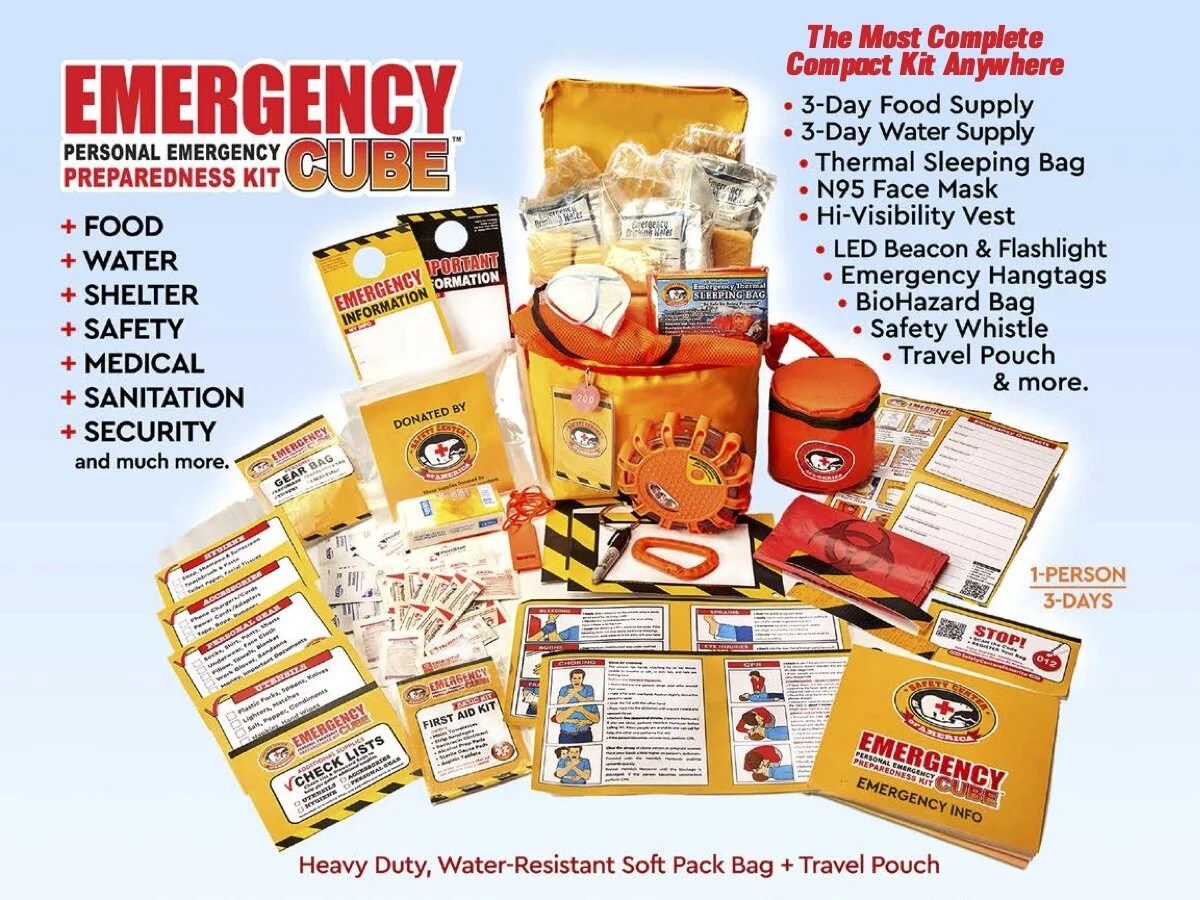OUR HISTORY
What We Do
Safety Center of America was established in 2002, and has since grown to become one of the largest providers of emergency food and water. We create safety strategies and provide the supplies for California Hospitals to satisfy their Emergency Operational Planning (EOP) and maintain their accreditation with The Joint Commission. Our vast experience and knowledge of hospital preparedness led us to develop numerous ground-breaking safety products and operational systems that we have adopted for many other industries.
Our Focus
We now focus on three innovative sectors of safety and preparedness:
Innovations in Emergency and Preparedness Products: We have created a variety of original designed products to safely operate a business, market a brand and stay prepared in any emergency. These campaigns show employees, customers and communities your commitments to leadership when it comes to safety and preparedness.
Policy and communication strategies for preparedness: We help businesses and organizations understand the importance of preparedness and consult on the development, training and marketing of customized Certified Safety Systems in and outside your company.
Simple & streamlined brand marketing programs: We provide businesses a variety of straight-forward services to help take the work and guesswork out of running a successful branded marketing campaign.
Leadership Team
Eric “Mad Dog” Madigan
Mad Dog is an award-winning designer and USMC Veteran. His creative career began in Los Angeles as Art Director for legendary comic book artist, Neal Adams. This propelled him into 20 years of designing merchandising and licensing campaigns for top movie studios and consumer brands. After witnessing and participating in the 1994 Northridge Earthquake he utilized his design acumen to develop safety items for the emergency preparedness industry. The ongoing product development lead to the creation of many safety items usage protocols that culminating in becoming the Emergency Preparedness Coordinator the largest health care providers around the country.
Zach Carson, CMO
Zach brings 20+ years experience bridging innovative lifestyle marketing, creative live experiences and positioning businesses on the front-lines of social and environmental movements. As a passionately charged systems thinker, entrepreneur and creative cultural influencer, Zach is uniquely suited to help businesses position their value proposition as a core part of their internal culture and external brand image. Zach received an MBA in Sustainability and Leadership Communication, and has been a creative pioneer in emerging industries, consumer trends and cultural movements.
Clients and Partners
Association Partnerships
MY STORY
Mad Dog Madigan
I was living in the San Fernando Valley in 1994 during the disastrous Northridge Earthquake, and to put it mildly, this experience was “earth-shattering” pun intended. Standing in my front yard at 4:54am, shaken and wide awake, confused, staring at my neighbors, feeling pretty much helpless, it was just about the worst feeling I have ever had, and as someone who just served in the United States Marine Corp, I thought I was ready for any emergency situation, but quickly realized I was not. Inside I felt embarrassed and instantly vowed that next time I would be more than just prepared.
This event jump started my interest in making and designing emergency kits and safety systems. Over the years that followed I would order components, pack and ship them out. It was a very modest endeavor that kept me busy while I worked as an art director at prestigious design firm with locations in Burbank and on Madison Ave.
The Emergency Tube
My first big break into the Industry came in 2005, after Hurricane Katrina, while watching the disaster unfold, it was heartbreaking, especially since I had access to important supplies, but no way of getting them efficiently to the end user in need. As I watched people literally up-to-the-necks in water, I quickly realized my supplies would have done little good. The cardboard emergency boxes I developed would have been pretty much useless. But that got me thinking about the main problem: water. I quickly realized I needed an emergency preparedness item that was water-resistant, compact and highly visible.
That’s when I came up with the The Emergency Tube, a floatable, waterproof kit with food, water, emergency blanket and first aid kit that could be dispatched from helicopters in situation where water was an overwhelming factor. It became a fast-seller and allowed me to focus on developing Emergency Products full time.
It Comes Full Circle
In 2006, I was introduce to the woman who was in charge of Emergency Preparedness for the Northridge Medical Center. Their hospital was literally “the Epicenter” of the 1994 Earthquake, she asked if I could create a preparedness plan for their entire facility, licensed beds and “surge” population for thousands of people. The two main issues within the hospital industry: cost and storage. How can we economically serve thousands of people at for up to 96 hours directly following a major disaster and where do we put it all?
The solution I came up with is still the largest safety unit in-use to this day; The EPU - The Emergency Preparedness Unit are full-sized and mid-sized cargo container retrofitted with roll-top doors, vents and stocked with enough food and water supplies for multiple days and thousands of people.
“Thanks to the Northridge Medical Center, it catapulted The Safety Center of America into the hospital industry.”
From that point on, The Safety Center of America became the on-call consultants tasked with developing Emergency Operation Plans for a variety of healthcare companies and hospitals, as well as servicing these facilities as the vendor for their ongoing emergency food and water supplies.
And now, many years later, I am still at it, innovating new product designs, improving on storage and distribution strategies, and re-thinking how our communities, businesses and families prepare and respond to emergencies.
